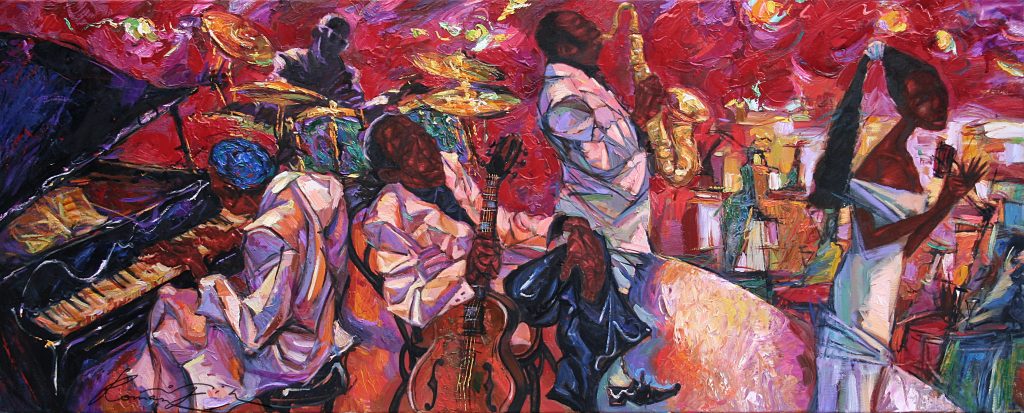Chapter 8 – Improvisation Skills

Thus far in this book, we’ve worked on fundamental skills. Now we move to a section focused on application: to improvisation, transcription, sight reading, and dictation.
We’re starting with improvisation for a few reasons. First, we believe creativity is a fundamental right and responsibility of all musicians. Second, improvisation is one of the best ways to enrich your knowledge structures and then demonstrate mastery of them. (“Create” is considered the most sophisticated way of demonstrating learning in Bloom’s Taxonomy of Learning.)
Third, we simply find it fun. Not all musicians will improvise in public performances. But we hope all musicians play around with music regularly, simply for the joy of it.
Some musicians, particularly those trained in the “classical” tradition, may find improvisation daunting. If that’s you, don’t worry—we’ll start by tying it to skills we’ve already worked on, and we’ll give you specific ways to approach “making stuff up” that should be helpful.
Other musicians may have already been improvising for some time and may wonder what this chapter will do for them. In some cases, focusing your attention on important aspects of improvisation that you have been doing more intuitively may help you improve your skills. But we also invite you to consider how your expertise in improvisation, and the ways we will use it here, can help you build other skills such as internal hearing, determining key, etc.
We invite you to commit to the importance of creativity by making up some music now. Grab your instrument or just hum. Make something up. If you’re not enjoying it to at least some extent, change what you’re doing until you do!
Learning Objectives
Students will be able to:
- Describe strategies for approaching improvisation.
- Effectively use time-based parameters of music: orienting to the meter, choosing rhythmic ideas, and planning out pacing.
- Effectively use pitch-based parameters of music: orienting to the key and planning out melodic shape/contour.
- Improvise a second phrase in response to a given first phrase.
- Improvise embellishments around a melody.
- Improvise a countermelody that parallels an original melody.
- Improvise a bass line to a given melody
- Improvise a single-phrase melody that clearly reflects a specified chord progression.
Image Attributions |
|

